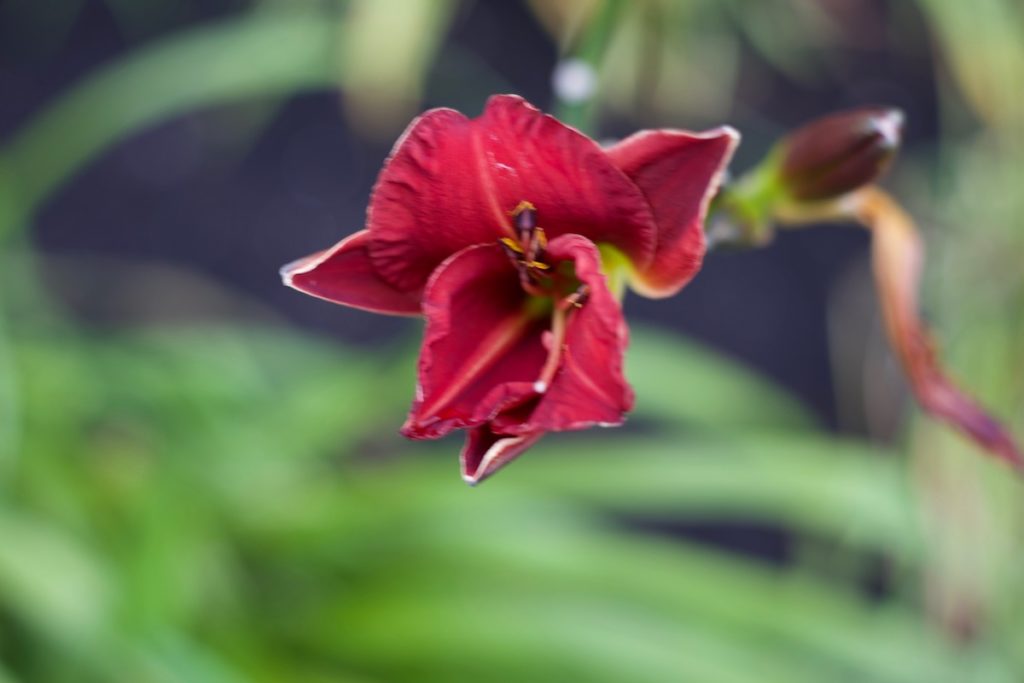By: Ann Harvey
Ann is an English literature student at UPEI with over thirty years of experience in journalism. Her column, At UPEI, will address several topics related to UPEI.Â
Children watch all things,
Zen masters always in now,
Joyfully content.
Most days I exit the city bus and enter the green and pleasant grounds of the University of Prince Edward Island. It is an agreeable way to start a day, not because the lawns are perfect but because they are not.
Although outdoor expanses with blades of grass all the same length and colour seem to be the objective for suburban yards and golf courses, I have never felt comfortable with them. We might as well carpet the Earth with synthetic fabrics. Monoculture may be a reasonable objective in growing food, but if I ever have a yard, I want it to be in the country, so I can have the freedom to indulge my taste. I want Gaea to select the plants it hosts. The diversity of the wilderness is always more interesting than formal gardening. Sadly, that would probably not be popular with urban neighbours.
Given my preference, it is no surprise that I am cheered to see UPEI lawn grass interspersed with dandelions, clover and miscellaneous other weeds. This growth is highlighted by trees, and islands of flowers providing a riot of colour. Diversity is a wonderful thing.
I’ve greatly enjoyed the colours and shapes of the Earth all my life. As a child I studied everything every day, an interest that may have been generated because I could only see colour and not shapes until I got medical treatment when I was two-and-a-half years old. I suspect that those of us who remember the first time they could see cherish sight more than those who can’t remember not having it.
Walking to school in the spring and fall, I would note such aspects as the light- coloured new growth on trees, flowers in bud, bloom and gone to seed. In the winter, the types of snow, different size and moistness of snowflakes and snowdrifts engaged my attention. Children are natural Zen masters. We start off in life watching everything, ascribing equal value to it all, and enjoying without necessarily verbalizing that enjoyment. I remember most of my childhood as a time when I was happy although I thought I was merely content.
Growing up in the Peace, an area of northeastern British Columbia and northwestern Alberta around the Peace River, I saw perhaps-less-spectacular flowers and trees then those in the south, but there was variety of vegetation enough to allow me a quiet joy, and the winter provided different but equally satisfying chances for observation.
At that time, I learned to love two particular types of flowers. The wild roses, Alberta’s provincial flower, which grow throughout Canada, reminded me of First Nations, their delicate blooms and subtle scent seeming to have always been an essential part of the landscape.
Dandelions, brash yellow flowers brought here by an immigrant have spread and, like Darwin’s finches assumed varying shapes and sizes but always stayed recognizable. These represent to me the immigrants like my family, people from every part of the world seeking better opportunities or, in some cases, fleeing terror and injustice. Although I know that “so-called discovery†and settlement have been a grievous imposition to First Nations, it would be impossible for an immigrant like me to be anything but welcoming to people from other nations. Just attending a campus which hosts such diverse people is a delight.
As a child, I did not yet understand the element of tragedy in this story, the high cost to the wild roses of hosting us dandelions, and the immensely tangled and sorrowful fallout we now are trying to resolve. Part of growing up is opening your eyes to the sadness in the world.
Still, the fields of grass and dandelions that greet me as I exit the bus and walk
through this green and pleasant campus remain, for me, a metaphor for our country.
